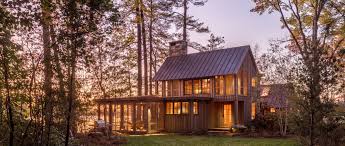
Maine, a state celebrated for its rugged coastlines, dense forests, and historic charm, also boasts a distinctive architectural scene that reflects its rich heritage and natural beauty. Maine architects, with their innovative designs and deep respect for tradition, have carved a unique niche that bridges the gap between functionality and artistry. This article delves into the essence of Maine’s architectural landscape, highlighting the state’s most notable architects, their contributions, and the distinctive characteristics that define their work.
The Influence of Nature on Maine Architecture
The landscape of Maine, with its rocky shores and expansive forests, profoundly influences its architecture. Maine architects often draw inspiration from the natural world, creating structures that harmonize with their surroundings. This synergy between built environments and natural landscapes results in homes and public buildings that are not only aesthetically pleasing but also environmentally sustainable.
The traditional “Cape Cod” style, with its simplicity and emphasis on practical design, remains a testament to the early colonial settlers’ adaptation to Maine’s climate. Modern architects in Maine continue to embrace and evolve this style, blending it with contemporary elements to create unique, functional spaces.
Notable Architects and Their Impact
1. Susan Oviatt
Susan Oviatt is renowned for her work in blending modern design with traditional New England aesthetics. Her projects often feature clean lines and minimalist designs, but she incorporates local materials and historical references to create a sense of place. Oviatt’s designs are celebrated for their ability to integrate seamlessly with Maine’s natural beauty, whether it’s a coastal retreat or a rural farmhouse.
2. John R. Morris
John R. Morris has made significant contributions to Maine’s architectural landscape with his emphasis on sustainable design. His use of renewable materials and energy-efficient technologies showcases a commitment to environmental stewardship. Morris’s projects, such as eco-friendly residences and community spaces, reflect his vision of architecture that respects and enhances the natural environment.
3. Anna Rosenthal
Anna Rosenthal is known for her innovative approach to historic preservation. Her work often involves renovating and repurposing Maine’s historic buildings while maintaining their original character. Rosenthal’s projects include everything from restored maritime structures to reimagined urban spaces, highlighting her dedication to preserving Maine’s architectural heritage.
Architectural Trends and Innovations
Recent trends in Maine architecture highlight a growing focus on sustainability and resilience. Architects are increasingly incorporating green technologies and sustainable materials into their designs, addressing environmental concerns while creating buildings that are both beautiful and functional.
One notable trend is the use of reclaimed wood and other locally sourced materials, which not only reduces environmental impact but also ties new structures to Maine’s rich history. Additionally, modern techniques such as passive solar design and advanced insulation methods are becoming more common, helping buildings perform better in Maine’s challenging climate.
Embracing Maine’s Unique Architectural Identity
The architectural identity of Maine is deeply intertwined with its natural landscape and cultural heritage. Maine architects, through their innovative designs and respectful adaptations of tradition, have crafted a distinctive architectural language that celebrates both the past and the present.
From historic preservation to modern sustainability, the work of Maine architects continues to evolve, reflecting the state’s ongoing dialogue with its environment and its rich history. Their ability to blend the old with the new, the natural with the built, ensures that Maine’s architectural legacy remains as dynamic and inspiring as its stunning landscapes.